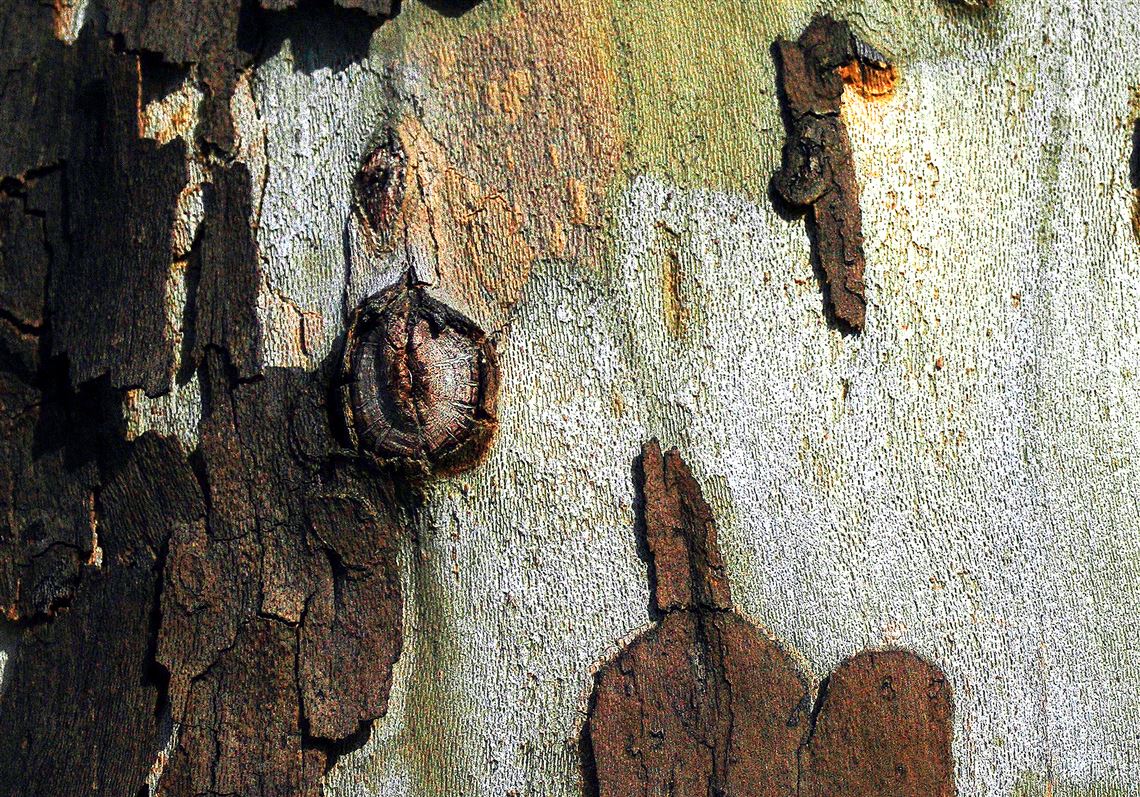The “Let’s Talk About Parks” series is designed to encourage exploration and discovery of Pittsburgh’s urban parks.
With most trees stripped bare of leaves, winter is a great time to get a good look at the wonderful variations of pattern, color and texture that form the trunks and branches of local urban trees. With a little practice, you’ll be able to easily identify many local tree species by name just by looking at their bark. Here are a few to get you started:
The beech tree is found in all four of Pittsburgh’s major parks — Schenley, Riverview, Frick and Highland — and can live up to 400 years. The beech tree can be recognized by its smooth silvery-gray bark that contrasts with the browns and dark grays of other forest trees.
The lacebark pine is an evergreen and keeps its needles year-round. Its bark peels, or “exfoliates,” uncovering patches of white, green and purple underneath, almost like a camouflage jacket. You can find lacebark pines near the tennis courts in Mellon Park and near the Frick Park gatehouse.
The bark and roots of the sassafras tree have a scent similar to root beer, and in the past its bark was used to make tea and for medicinal purposes. The grayish-brown trunk of the sassafras tree is ridged and furrowed.
The rows of majestic London plane trees that line the street near the entrance to Carnegie Library of Pittsburgh in Oakland are impossible to miss. These massive trees have gray bark that sheds in flakes almost year-round, revealing smooth, creamy-white bark underneath.
The dawn redwood was once thought to be extinct but was found in China in 1948. Seeds and seedlings were brought to North America, where it has survived well. The dawn redwood has needles, but, unlike evergreens, it loses them in the winter. It sheds its dark brown bark in long strands, which squirrels snatch up to use as building material for their nests.
To learn more about identifying trees by their bark, go to www.pittsburghparks.org/letstalkaboutparks.
First Published: December 30, 2014, 5:00 a.m.

















